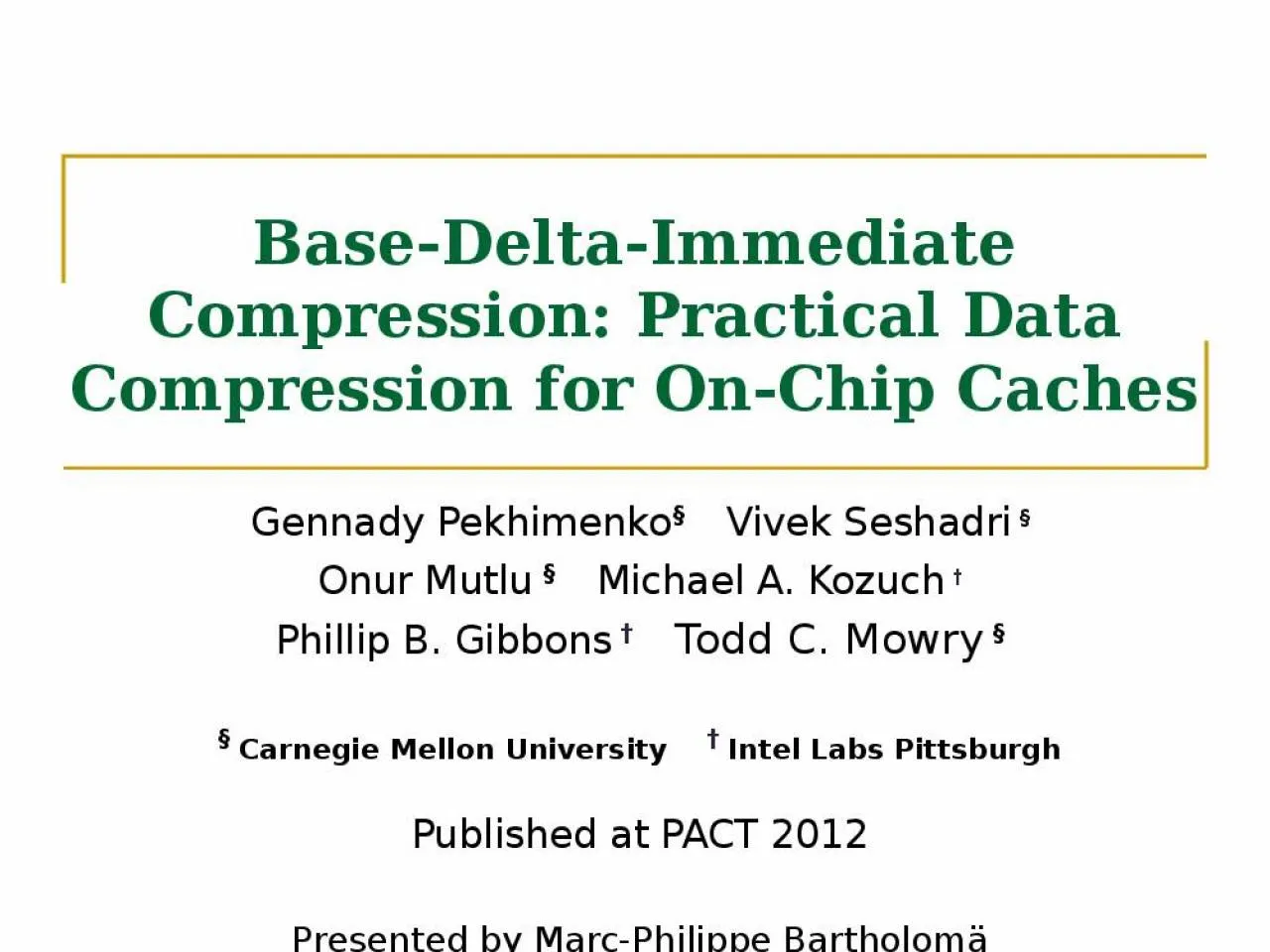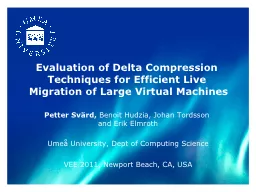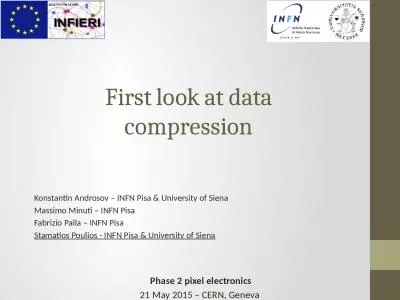PPT-Base-Delta-Immediate Compression: Practical Data Compression for On-Chip Caches
Author : candy | Published Date : 2022-05-17
Gennady Pekhimenko Vivek Seshadri Onur Mutlu Michael A Kozuch Phillip B Gibbons Todd C Mowry Carnegie Mellon University Intel Labs Pittsburgh
Presentation Embed Code
Download Presentation
Download Presentation The PPT/PDF document "Base-Delta-Immediate Compression: Practi..." is the property of its rightful owner. Permission is granted to download and print the materials on this website for personal, non-commercial use only, and to display it on your personal computer provided you do not modify the materials and that you retain all copyright notices contained in the materials. By downloading content from our website, you accept the terms of this agreement.
Base-Delta-Immediate Compression: Practical Data Compression for On-Chip Caches: Transcript
Download Rules Of Document
"Base-Delta-Immediate Compression: Practical Data Compression for On-Chip Caches"The content belongs to its owner. You may download and print it for personal use, without modification, and keep all copyright notices. By downloading, you agree to these terms.
Related Documents














